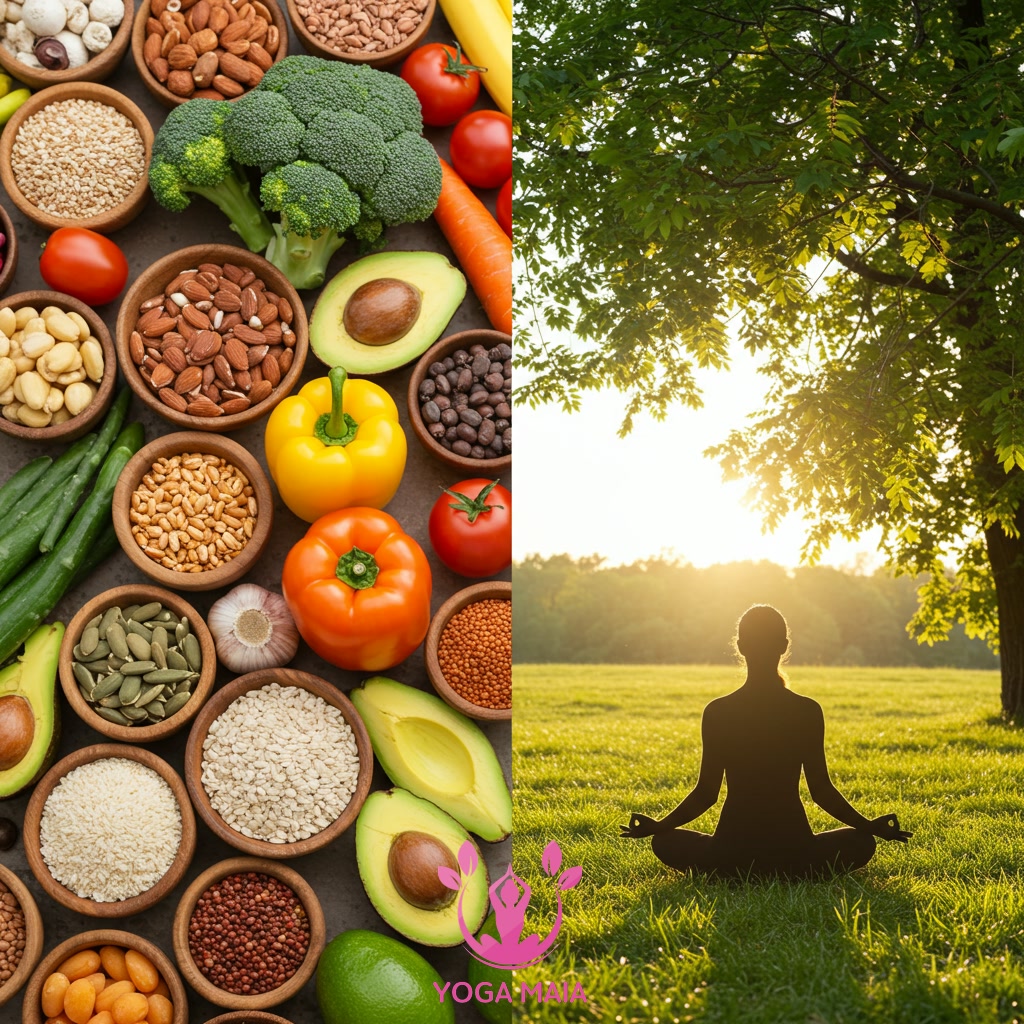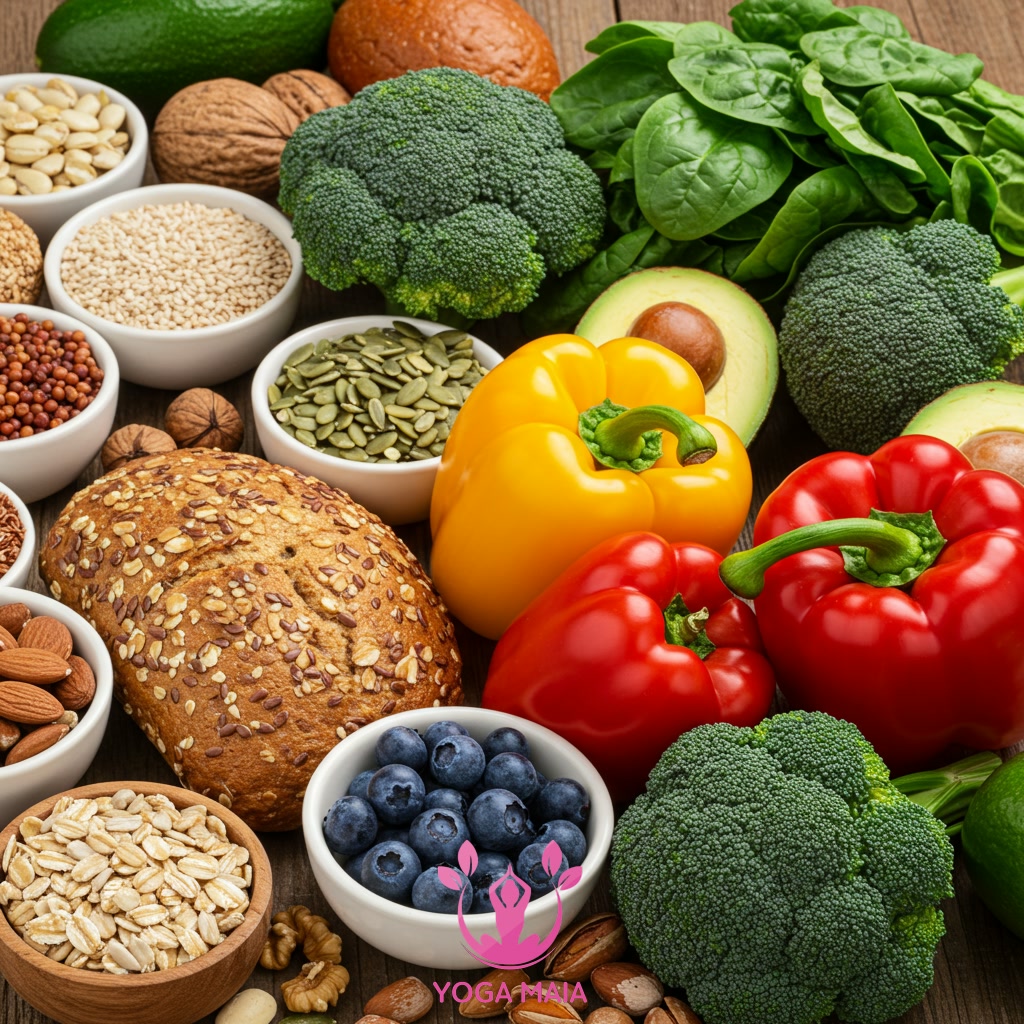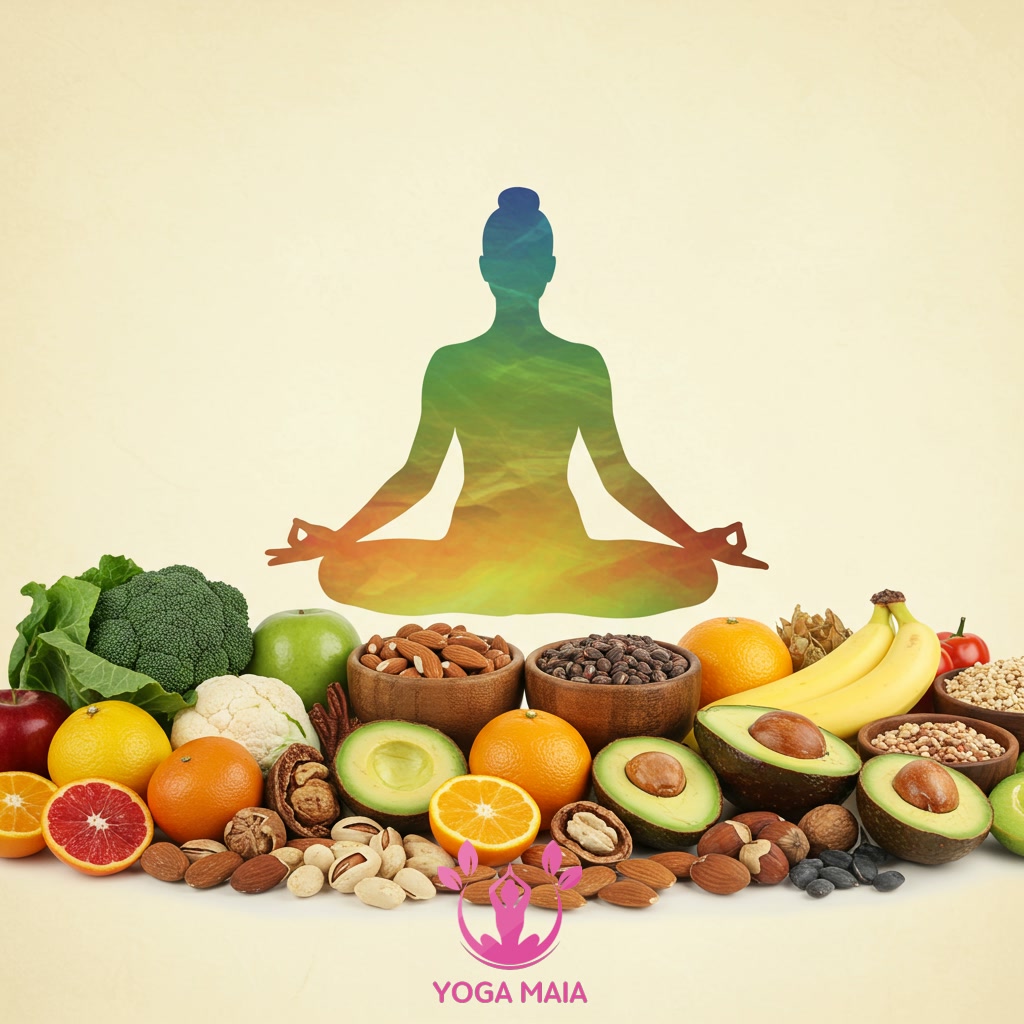Yoga Blog
Integrating Whole Foods and Yoga: A Holistic Approach to Nourishing Body and Mind

This content explores the integration of whole foods and yoga as a holistic strategy for personal well-being. It highlights how combining mindful nutrition with a regular yoga practice can profoundly nourish both the physical body and mental state. This unified approach offers a comprehensive path to enhancing vitality and balance in life.
Table of Contents
- Section 1: Introduction: Embracing a Holistic Approach to Well-being
- Section 2: Understanding Whole Foods: Fueling the Body for Optimal Health
- Section 3: Understanding Yoga: Cultivating Inner Peace and Physical Strength
- Section 4: The Synergy: How Whole Foods and Yoga Complement Each Other
- Section 5: Practical Steps for Integrating Whole Foods and Yoga
- Section 6: Experiencing the Benefits: Nourishing Body and Mind Holistically
- Section 7: Conclusion: Sustaining Your Journey Towards Integrated Wellness
Section 1: Introduction: Embracing a Holistic Approach to Well-being
Welcome to a journey exploring the powerful synergy between whole foods and yoga as a pathway to holistic well-being. In an age where health advice can feel fragmented and overwhelming, embracing a holistic perspective means recognizing the interconnectedness of our physical body, mind, and spirit. This introductory section sets the stage for understanding how intentional nourishment through unprocessed, natural foods, combined with the mindful movement and breathwork of yoga, offers a comprehensive strategy for enhancing vitality and inner peace. It’s about moving beyond treating symptoms to cultivating a balanced lifestyle that supports health from the inside out, laying a foundation for deeper exploration in subsequent sections.
 Introduction: Embracing a Holistic Approach to Well-being
Introduction: Embracing a Holistic Approach to Well-being
Section 2: Understanding Whole Foods: Fueling the Body for Optimal Health
Understanding whole foods is fundamental to nourishing your body effectively. These are foods consumed in their most natural or minimally processed state, meaning they retain their original nutrient profile without added sugars, unhealthy fats, or artificial ingredients. Examples include fresh fruits and vegetables, whole grains like quinoa and brown rice, legumes, nuts, and seeds. These powerhouses provide complex carbohydrates for sustained energy, essential vitamins and minerals, and vital fiber that supports digestive health and keeps you feeling full. By choosing whole foods, you are providing your body with the clean, efficient fuel it needs to function optimally, supporting everything from cellular repair to maintaining stable energy levels throughout the day. This foundational approach to nutrition is key to building a resilient and healthy physical self.
 Understanding Whole Foods: Fueling the Body for Optimal Health
Understanding Whole Foods: Fueling the Body for Optimal Health
Section 3: Understanding Yoga: Cultivating Inner Peace and Physical Strength
Moving from understanding the fuel we provide our bodies through whole foods, we now explore the equally vital pillar of yoga. Understanding yoga goes beyond seeing it merely as a physical workout; it is a practice designed to cultivate both inner peace and physical strength. Through various postures, known as asanas, yoga builds flexibility, balance, and muscular strength, toning the physical body. Simultaneously, the focus on breath control (pranayama) and mindful presence during practice calms the nervous system, reduces stress, and fosters a profound sense of inner tranquility. It’s this harmonious blend of physical discipline and mental stillness that makes yoga a powerful tool for holistic well-being.
 Understanding Yoga: Cultivating Inner Peace and Physical Strength
Understanding Yoga: Cultivating Inner Peace and Physical Strength
Section 4: The Synergy: How Whole Foods and Yoga Complement Each Other
Building upon our understanding of both whole foods and yoga individually, we now explore their powerful synergy. Whole foods provide the essential nutrients, vitamins, and energy required to support a consistent and effective yoga practice. They build physical strength, improve flexibility, and enhance endurance, making postures more accessible and sustainable. Conversely, yoga aids in optimizing digestion and metabolism, ensuring the body can efficiently utilize the nourishment received from whole foods. Furthermore, the mindfulness cultivated through yoga can lead to more conscious and intuitive food choices, reducing cravings for processed items and fostering a deeper connection to the body’s true needs. This integrated approach creates a positive feedback loop, where good nutrition fuels a better practice, and a dedicated practice supports healthier eating habits, leading to profound physical and mental well-being.
 The Synergy: How Whole Foods and Yoga Complement Each Other
The Synergy: How Whole Foods and Yoga Complement Each Other
Section 5: Practical Steps for Integrating Whole Foods and Yoga
Building upon the understanding of how whole foods and yoga work together, implementing this synergy involves practical steps. Start by planning your meals to include a variety of nutrient-dense foods such as fruits, vegetables, whole grains, lean proteins, and healthy fats, ensuring you have the sustained energy needed for your yoga practice. Practice mindful eating, paying attention to your body’s hunger and fullness cues, much like you listen to your body on the yoga mat. Consider timing your meals and snacks to support your practice schedule, perhaps a light snack before or a nourishing meal afterward. Integrate yoga into your routine consistently, even if it’s just short sessions, focusing on postures and breathing techniques that align with your physical and mental state. This mindful approach to both nutrition and movement creates a powerful foundation for overall well-being.
 Practical Steps for Integrating Whole Foods and Yoga
Practical Steps for Integrating Whole Foods and Yoga
Section 6: Experiencing the Benefits: Nourishing Body and Mind Holistically
Experiencing the integrated benefits of whole foods and yoga reveals a profound sense of holistic well-being. As nutrient-rich foods fuel the body, providing sustained energy and supporting optimal physical function, regular yoga practice simultaneously calms the nervous system, improves flexibility, and fosters mental clarity. This synergy leads to tangible improvements: enhanced digestion, reduced stress levels, better sleep quality, and a more resilient immune system. Mentally and emotionally, individuals often report increased self-awareness, greater emotional balance, and a deeper connection to their inner state. The physical vitality gained from whole foods complements the mental peace cultivated through yoga, creating a virtuous cycle of nourishment that uplifts both body and mind.
 Experiencing the Benefits: Nourishing Body and Mind Holistically
Experiencing the Benefits: Nourishing Body and Mind Holistically
Section 7: Conclusion: Sustaining Your Journey Towards Integrated Wellness
The journey towards integrated wellness through whole foods and yoga is not a destination, but a continuous practice. Sustaining these habits involves cultivating mindfulness in both your nutritional choices and your movement. It’s about listening deeply to your body’s needs, adapting your practice as you evolve, and embracing consistency over perfection. By consciously weaving nutrient-dense foods into your daily life and maintaining a regular yoga routine, you build resilience, enhance vitality, and nurture a lasting connection between your physical and mental self. This ongoing commitment fosters a profound sense of balance and well-being that supports you throughout life’s changes.
 Conclusion: Sustaining Your Journey Towards Integrated Wellness
Conclusion: Sustaining Your Journey Towards Integrated Wellness












